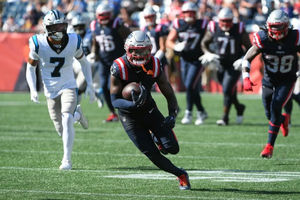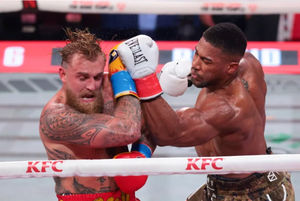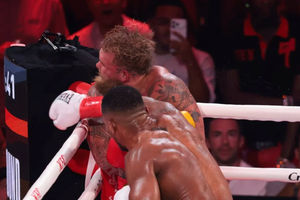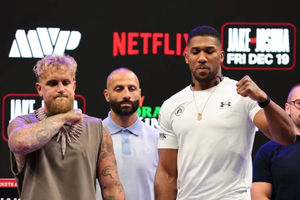MLB's New Home-Plate Rule Had Its Lowest Moment [Update]
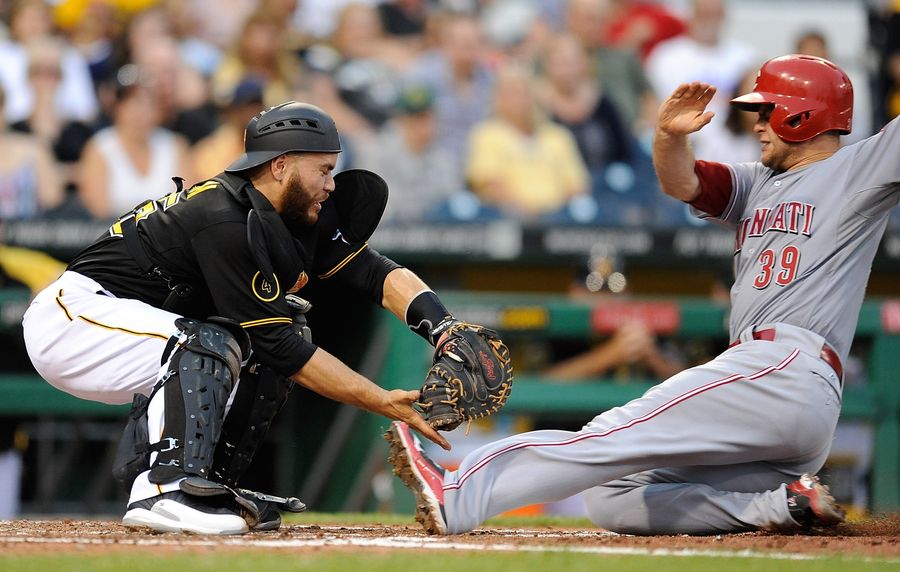
This run, the Reds' sixth of 11, didn't have much of an impact on the result of a game, which saw Pirates outfielder Travis Snider take the mound in the ninth (and strike out Joey Votto). But the controversial play at the plate may have been the best example yet that no one, not managers, coaches, or umpires, quite understands MLB's new home-plate rule.
The bases were loaded—this was a force play. Bucs catcher Russell Martin received the throw, tapped home plate with his his foot, then got out of the way of the sliding Devin Mesoraco. Mesoraco was ruled out; Bryan Pryce challenged argued, and after a lengthy chat with the replay office in New York, umpires overturned the call.
Here's the relevant part of rule 7.13, newly passed this year in an effort to keep catchers from obstructing the plate:
Unless the catcher is in possession of the ball, the catcher cannot block the pathway of the runner as he is attempting to score. If, in the judgment of the Umpire, the catcher without possession of the ball blocks the pathway of the runner, the Umpire shall call or signal the runner safe. Notwithstanding the above, it shall not be considered a violation of this Rule 7.13 if the catcher blocks the pathway of the runner in order to field a throw, and the Umpire determines that the catcher could not have fielded the ball without blocking the pathway of the runner and that contact with the runner was unavoidable.
Inexplicable. Contact was minimal—a toe-tap between Martin and Mesoraco. Martin made every effort to get out of the way. And, remember, this was a force play. Martin's only obstruction was having his foot on the plate to complete the out.
"My immediate reaction was, 'What can I do? What adjustments do I make?'" said Russell Martin. "But honestly, I don't think I need to make an adjustment — there's an adjustment to make to the rule.
Mesoraco, a catcher himself, agreed: "I wouldn't have done anything different myself."
The rule was implemented in the name of safety, an attempt to cut back on violent collisions at home plate. And in theory, if it prevents catchers from denying runners a path to the plate before the ball gets there, it's a good thing. But in practice it's proven confusing and controversial.
Clint Hurdle argued with the call being overturned, which was functionally useless since the ruling came from New York, and got ejected for his trouble. From back in the clubhouse, he called MLB VP of baseball operations Joe Torre to complain and ask for a clarification. But he's probably shit out of luck for the rest of this year. It's a overly broad rule, inconsistently applied, but it's very specifically an "experimental rule," one intentionally meant to be examined and re-worded this winter. Here's hoping it doesn't fuck up someone's season before it gets fixed.
Update: In a statement, Joe Torre and MLB admitted that the rule was improperly applied last night.
Best NFL Player Props for Week 16: Top Bets and Value Picks
Oklahoma’s 50 Cent Moment Backfires in CFP Loss to Alabama
What Anthony Joshua's Knockout of Jake Paul Means for Boxing
Commanders vs Eagles Week 16 Saturday Betting Pick
- Jake Paul vs. Anthony Joshua Betting Picks: Best Bets for the Boxing Supercard
- Best NBA Picks for Friday December 19th: 76ers vs Knicks, Cavs vs Bulls
- NHL Friday Betting Picks: Hurricanes vs Panthers, Canucks vs Islanders
- College Football Playoff Full First-Round Betting Picks and Predictions
- Best NBA Bets Tonight: Three Picks for Dec. 18th's Slate
- Rams vs Seahawks Thursday Night Football Week 16 Betting Picks
- Wednesday Dec. 17th College Basketball Betting Picks and Predictions




